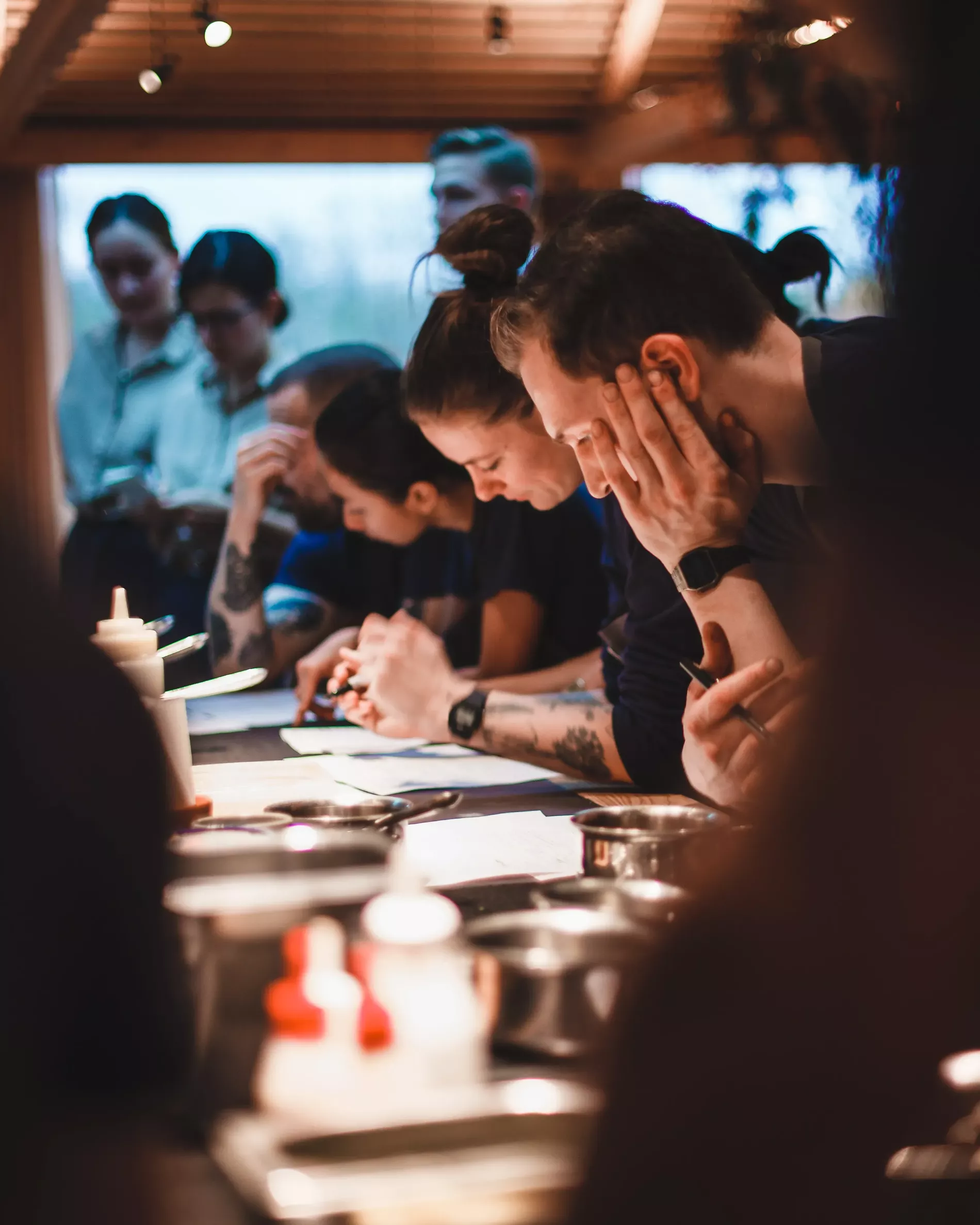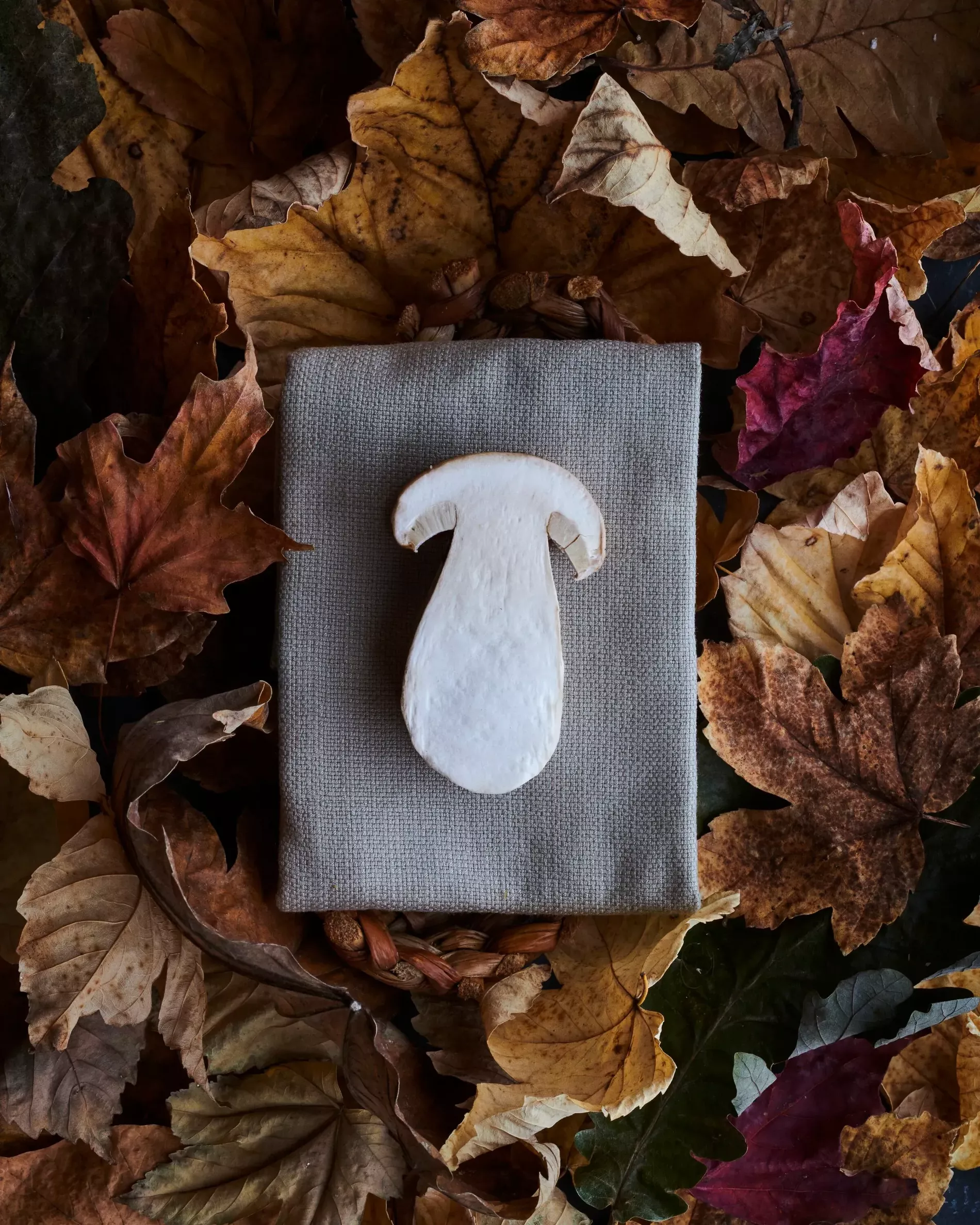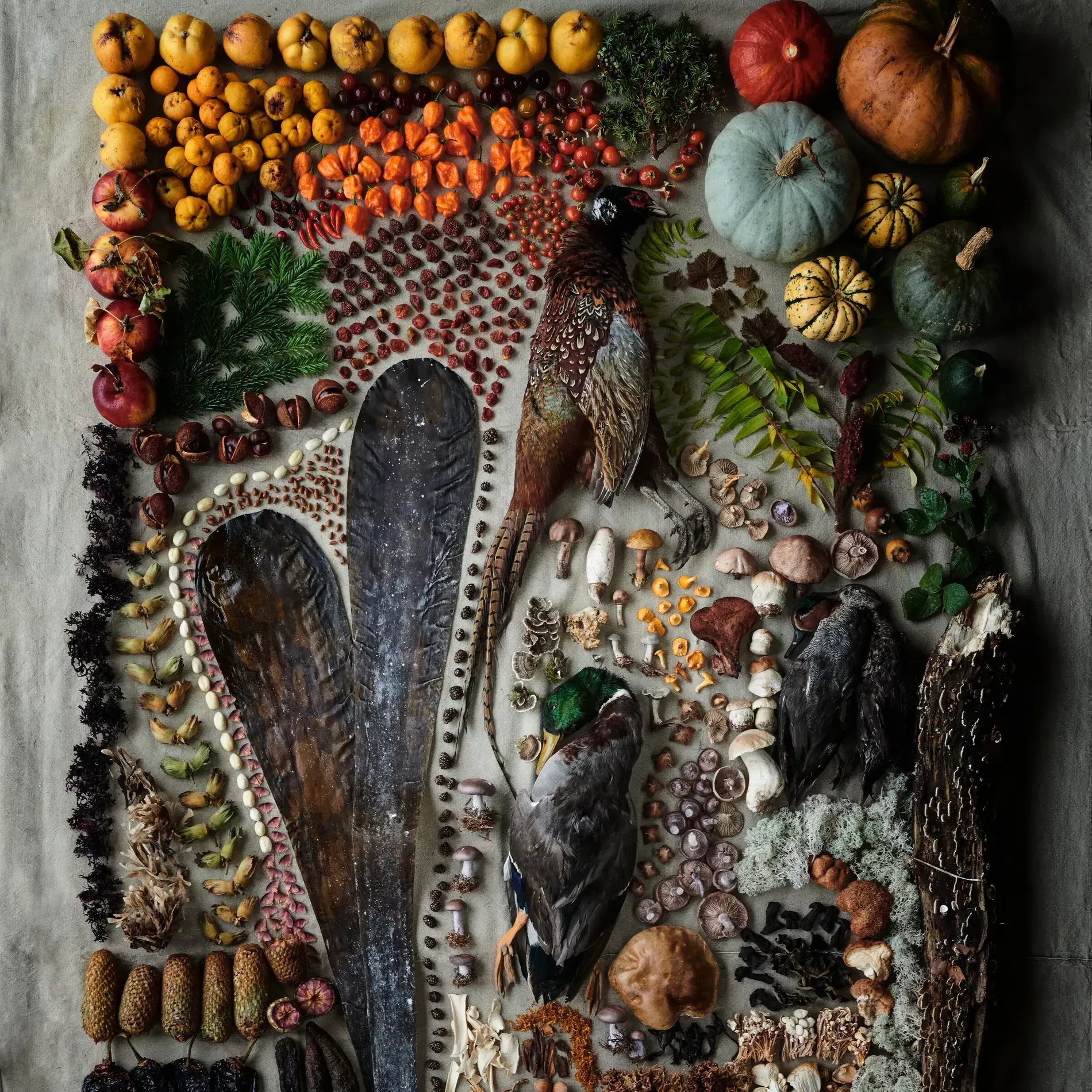We take an autumnal ride in Noma’s weird and wonderful culinary rollercoaster
A duck brain eaten directly out of the duck’s skull. A whole mallard wing on a plate. A ragout of reindeer penis. Past editions of the Game & Forest menus at Noma have not been for the squeamish. Just back from their residency in Japan, the Copenhagen culinary landmark re-opened last month with a brand new Game & Forest menu and hundreds of antlers welcoming guests at the entrance.
While we were sad to see the reindeer penis leaving the building, we were treated to other unusual parts of Santa’s trusted travel companion in a menu characterised by unusual textures and, of course, lots of taste. Here’s a few examples of what an autumnal ride in Noma’s weird and wonderful culinary rollercoaster looks like.
Crowberry SCOBY
Chances are you’ve probably had some kombucha. But eating the SCOBY – the Symbiotic Culture of Bacteria and Yeast that is used to ferment the probiotic tea beverage – probably never occurred to you, right? Well, the Noma test kitchen thought it would be fun to try. Normally, you are interested in enjoying the kombucha and not the SCOBY. This time, it was the other way around. So, what the test kitchen did was to take the existing SCOBY, adding a crowberry tea for flavour, and then began growing the SCOBY in rectangular boxes, adding cellulase, an enzyme that breaks down the SCOBY’s cellulose.
Otherwise, the SCOBY is impossible to chew, says Mette Søberg, Noma’s head of the test kitchen. Cut out in a rectangular shape and brushed with larch wood oil and a drizzle of bergamot, the SCOBY stood out with a wonderfully perfumed, fruity, and floral taste. The texture, however, was the most wondrous, and chewing the crowberry SCOBY rectangle was like chewing a juicy mix of whale blubber and a bicycle tyre.
Reindeer brain omelette
Alas, the heydays of the reindeer penis are over at Noma. Now, it’s time for the brains. The result of what happens when you task the Noma kitchen with making a Noma version of an omelette. It’s basically a very thin egg pancake with pheasant garum (a salty, fermented sauce) and kelp salt, folded around the reindeer brain. .

Photo: Noma
The brain has been soaked, salted, and cooked with eggs and cream to form a mass with a soft, custardy texture. The omelette is then brushed with a cream of egg yolks salted with pheasant garum, and served in a foamy, buttery pheasant garum sauce. With its soft, creamy texture, the brain omelette proved to be a quite divisive serving. Some at the table didn’t have the stomach to finish. I, on the other hand, enjoyed every bite
Reindeer tongue
The omelette left some speechless. Luckily, the tongue followed. The reindeer tongues are cleaned, skinned, trimmed, and then pan-fried with butter and thyme – the old-fashioned way, really. The tongue, served on a piece of sharpened reindeer antlers, even comes with a herbed béarnaise of sorts. Only at Noma, it’s made with oxidized wine, a Noma Projects vinegar made with Stauning whisky from the Danish West coast, and a pinch of pine salt.
“The reason why we chose the tongue was because of its crazy good taste and texture. It’s really juicy, and you can really chew it and get lots of flavour out of it,” says Mette Søberg. She’s right. There’s a textured sort of tongue at play here. Chewy, but tender, and with so much meaty flavour.
Fresh walnut tofu
Inspired by monastery visit in Japan where the team were treated to sesame tofu, the test kitchen decided to make a nut tofu made with the ‘milk’ from fresh walnuts, curdled with kuzu, powdered Japanese arrowroot.
“Working with fresh nuts is arduous. We spend maybe two or three hours every morning peeling fresh sunflower seeds, hazelnuts, and walnuts. But we think that using fresh nuts makes such a difference,” says Mette Søberg.

Photo: Noma

Photo: Noma
All the hard work peeling does pay off. The silky walnut tofu is covered with shaved, fresh walnuts, their taste pronounced by a drizzle of vinaigrette flavoured with shavings of ‘pumpkin-bushi’: A vegetarian version of the katsuobushi, the dried and smoked tuna used for flavouring dashi, the Japanese base soup stock. Developed with a fourth generation katsuobushi craftsman, the pumpkins are dried and cold-smoked for up to two months, a process lending them smokiness and a very rich umami.
Pine resin jelly
Who in their right mind would ever eat pine resin? Well, the test kitchen found out that if they soaked the resin, cooked it for hours with wine and sugar, they could blend it and dry it into little lumps. When soaked again, the lumps increased tenfold in size and turned into a stable, blubbery resin jelly, explains Søberg. The first dessert on the menu, and served in a tartlet made of frozen cream, the golden nugget of resin made an entrance with a quite mild, piney flavour, and an interesting texture, the soft resin jelly melting away in the mouth.
